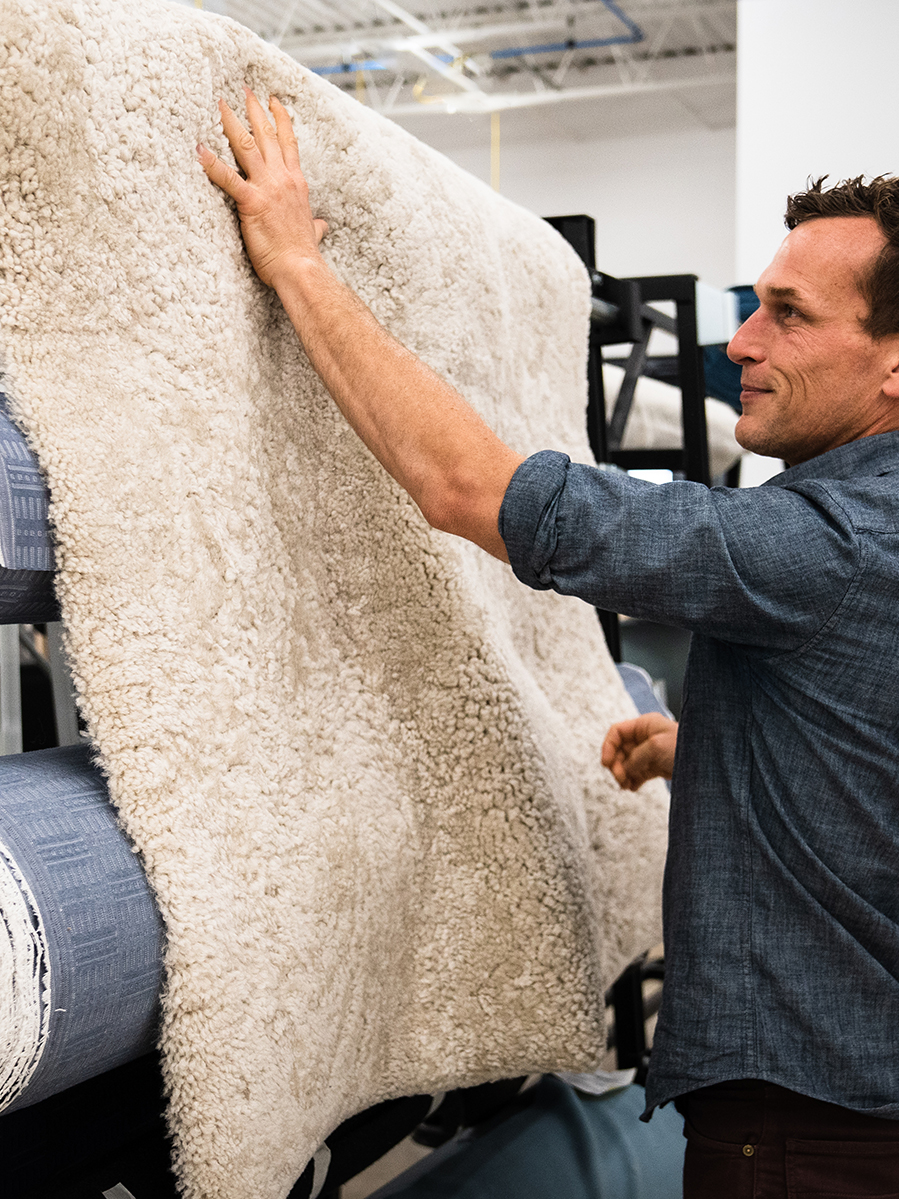What Not to Do When Ordering Custom Upholstered Furniture
“If a shop can turn a project around by the end of the week, leave.”
Updated Oct 12, 2018 6:01 PM
We may earn revenue from the products available on this page and participate in affiliate programs.
Just because Aidan ripped the leather out of an old train car for Carrie’s armchair on Sex and the City doesn’t mean his seams were straight. (Maybe that’s why she got the discount.) People unknowingly expect great craftsmanship from furniture makers, only realizing it when it’s not there. For the uninitiated, Grant Trick is a seasoned pro regarding custom-built designs, from frames to upholstery. From his Birmingham, Alabama, studio, he was happy to educate us on what goes into creating something from scratch. “We build everything—giant sofas to tiny dining chairs,” says Trick. “It’s all just fabric and wood.” Trick has boiled the process down to a few simple steps.
Measure Everything
When you embark on a new project, first consider how the sofa or chair fits in your home. The more specifics and measurements you can provide to a pro for the job, the better they will be in guiding things along. Measure the length of the wall a couch sits against, or the depth a cushion should have, and an expert in the field can take that into consideration.
Do Your Research in Person
A simple Google search for the phrase custom upholstered furniture and a zip code will not end up in a high-quality piece. Workshops come in all shapes and sizes, and, like any designer, plenty of different styles. “You’ve got a spot such as mine, which is very large,” says Trick. “And then a guy in his garage doing only three projects a month, but has been doing it for 50 years and is amazing.”
His best advice is to do your homework. Research online providers who match your taste. Go visit in person and see if their skills resonate. The odds are that if someone keeps their shop tidy, their effort will be, too. “Check to see if the seams are straight, if the pattern lines up, if the skirts fall nicely, and if the padding is smooth,” recommends Trick. Do this person’s results resemble a hobbyist’s or something you’d see in CB2?
It All Starts With the Wood
Some frames are built entirely in-house, but even the ones that get outsourced to manufacturers are overseen by Trick—something anyone would want to check out before commissioning a new piece. Like the framework itself, different designs also call for different varieties of wood for a sturdier or more styled look.
Pick a Fabric Based on Your Lifestyle
Choosing the upholstery isn’t just about deciding on a print and a color. There’s the padding and stuffing underneath to consider, as well as if the finished product will have to hold up to a pet or outside weather. And don’t forget to account for the wear and tear it will go through on a daily basis.
Every moment you sit on the couch or scrub out a stain, it wears on the surface. A low-abrasion rating is why a DTC sofa-in-a-box for under $1,000 starts pilling like an old sweater only three months in. Performance fabrics, on the other hand, have a high rating. Make your selection accordingly.
P.S.: Upholstery specialists and those who reupholster a chair the dog tore up are not the same thing. (Trick’s outpost doesn’t admit reupholstery clients.) Owners are usually happy to steer people in the right direction to a referral—just as how a doctor might recommend a good orthopedist in the area.
Play the Waiting Game
“If a shop can turn a project around by the end of the week, leave,” warns Trick. Great artisans are tied up because they’re in demand, not due to laziness. An average chair is in progress anywhere from six to 16 weeks. One way to speed things up: Drop off the piece at the store so it’s in the pipeline right away.
Don’t Pinch Pennies
Numbers vary by market, but ultimately quality craftsmanship costs more—either in the components used or the labor. Think of it this way: An expensive, well-made suit can be worn off the rack, as can a cheaper model that’s been brought to a seasoned tailor. Same goes here. A smaller chair could run for half of a big sectional, but it depends on the design. According to Trick, a club chair could cost more than half the price of a sofa because of the intricate detail needed for the job. Most important, though, this isn’t the place to cut corners on price. “Don’t anticipate getting a recliner re-covered properly for $500,” he advises. In short, you get what you pay for.


